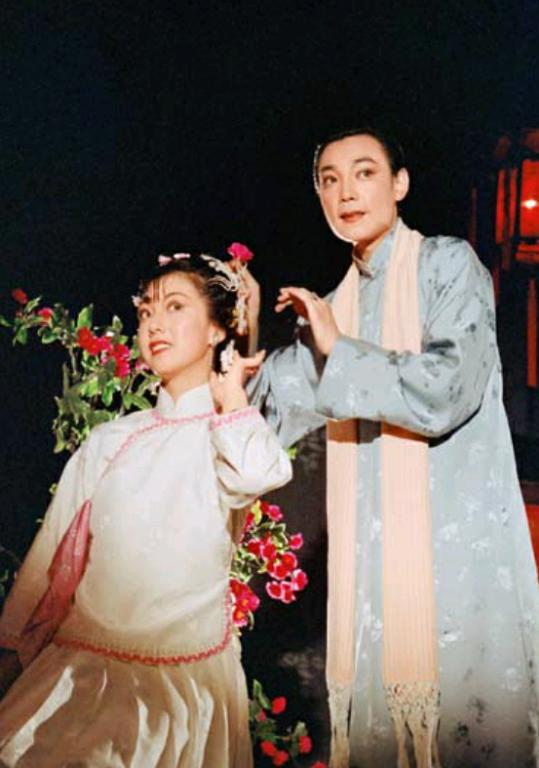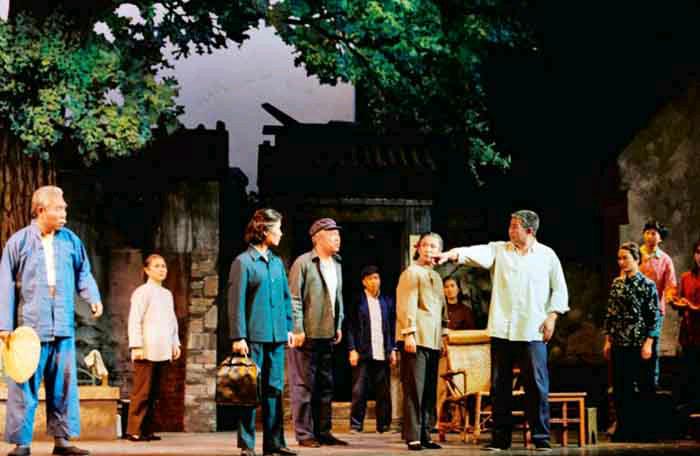Remembering a Century on Stage
2017-09-27bySongBaozhen
by+Song+Baozhen
The year 2017 marks the 110th an- niversary of the introduction of Western drama to China. In the year 1907, the Spring Willow Society, which consisted of a group of Chinese students who had studied in Japan, performed fragments of La Dame aux Camélias (The Lady of the Camellias) and Uncle Toms Cabin.
To commemorate the new era of Chinese drama, on July 28, 2017, a 20-day exhibition was jointly launched by the Chinese National Academy of Arts, National Theatre Company of China and Beijing Peoples Art Theatre.
The exhibition reviews Chinese drama between 1907 and 2017, featuring more than 700 pictures, stage stills and stage designs contributed by over 50 art troupes and colleges. Videos of some important plays of the past century were displayed on the big screen, bringing the audiences back to decades-old stages.
On display is a wide array of exhibits including first-hand documents, books, props, and restorations of stage costumes and sets as well as items used by famous artists backstage and at home.
Has Chinese drama adopted Western flavor since the introduction? Yes, but not exactly.
The answer is “yes” because today, we are still absorbing its essence. “Not exactly”because after a century of development, integration, transformation and innovation, the art has been flavored with Chinese connotations, not only in form but also in content, making it part of the Chinese culture.
Rectification vs. Poetic Rhythm
Chinese academics and literati have long adhered to the principle of “conveying truth through writing.” The principle also applies to traditional Chinese operas, which focus on “educating people” via performance. Theater and drama have never served as products of aestheticism beyond reality. Especially in the modern era when the Chinese nation experienced too many life-and-death crises, some noble practitioners aspired to help people who were struggling for survival and introduced Western drama to China in the hopes of rectifying social evils.
During the May 4th Movement in 1919, for instance, drama was a central player in spreading ideas. At that time, dramatic circles were heavily influenced by Norwegian dramatist Henrik Ibsen(1828-1906), who inspired a populist fighting spirit to “dare attack society and fight alone against the majority,” a line from Lu Xun (1881-1936), a leading figure in modern Chinese literature.endprint
“Modern drama is tremendously valuable because of its ideological connotations,” asserted Hong Shen (1894-1955), a director, playwright, educator, and socialist during the Republic of China period(1912-1949).
By the 1930s and 1940s, all kinds of drama were being staged, most with heavy political overtones based on the specific times. Western drama would not have gained traction, let alone flourished as it did, if the country had not demanded it pragmatically.
In the new historical period, the combat mission of modern drama has been transformed, but it remains an important art form serving society and values.
China has highly-developed poetry. Dramatic theorists often look at drama as the evolution and division of poetry. In the long history of Western drama, many masters had a deep poetic quality in their works. Chinese dramatists, both early and recent, have shown great interest in the poetic rhythm of many timeless Western dramas as evidenced by the products they have staged.
Plays by Chinese dramatists are presented in voices transcending poetic horizon through observation and performance about life, with focus on the real world through feelings and perspectives of criticism, social reality and visionary ideals.
Images of poetically emotional expression live in many characters, such as Fan Yi, the lead female character in Thunderstorm, a magnum opus of Cao Yu (1910-1996), and Guan Hanqing, the main character in Guan Hanqing, a modern drama by Tian Han (1898-1968), another eminent Chinese playwright. Chinese playwrights pursued mind connections beyond the lines, to and from multiple points, transcending Western aesthetics of realism.
Strong National Flavor
Chinese drama is based on history, reality and Chinese life. It expresses the quality and cultural character of the Chinese nation by presenting the results of long-term integration and accumulation of modern consciousness and national aesthetic spirit.
Historically, the most celebrated standouts have been mostly writers of excellent national cultural works reflecting universal Chinese ethics and values for social justice.
During its long-term development, Chinese drama has established a style featuring a strong regional cultural flavor. Geographically, work from the black soil of northeastern China tends to be bold and unconstrained, plays from the northwestern Loess Plateau are loud and strong, simple and desolate, productions in Shanghai are modern and urban, and those in Beijing are natural, graceful and poised, carefree and contented.endprint
The national features of Chinese drama are depicted not only in expression techniques, which utilize elements of traditional operas, making it one of the best ways to adapt Western drama to China, but also by methods of communication, national spirit and aesthetic charm, which have fueled Chinese characteristics and Chinese style from the heart.
Technically, Chinese dramatists have communicated with the aesthetic spirit of Western drama by using realism, romanticism, and modernism, and at the same time used national artistic spirit, poetic connotations and unique artistic methodology and means to establish national uniqueness in characterization, setting, dramatic conflict and theatrical language.
The century of progress has shown that Chinese drama cannot move forward without highlighting the central essence of Chinese tradition as it absorbs experience from other cultures. endprint
endprint